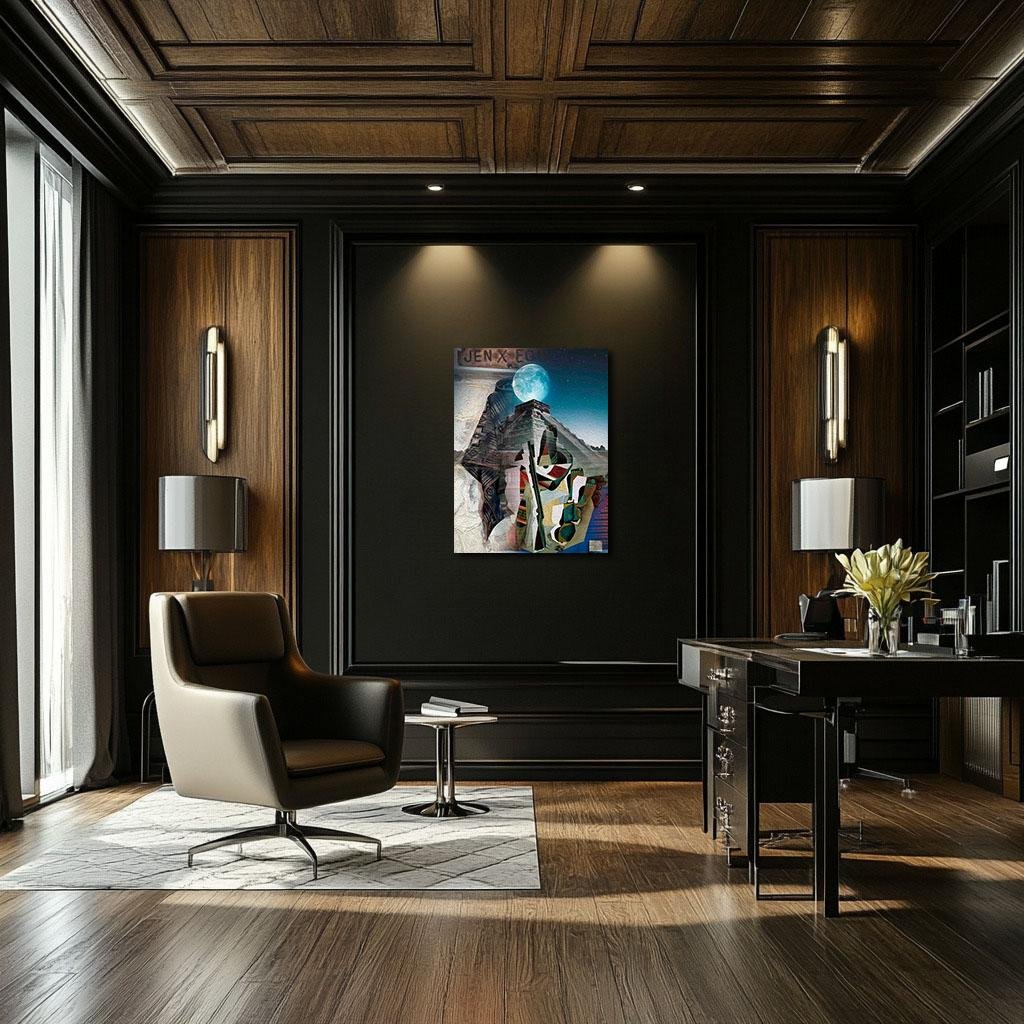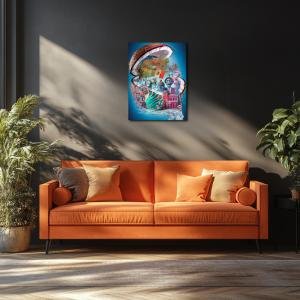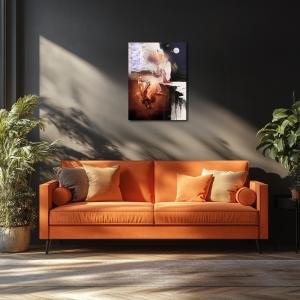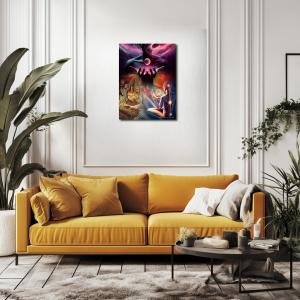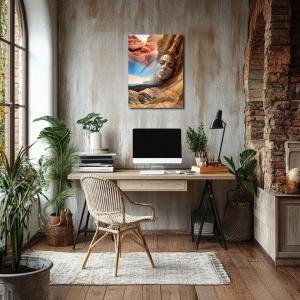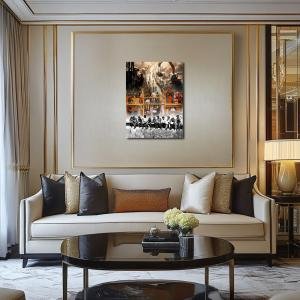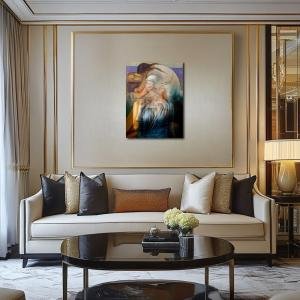Echoes Beneath the Moon: A Zapatista Reverie
Echoes Beneath the Moon reimagines Diego Rivera’s Zapatista Landscape as a mystical meditation on resistance, memory, and ancestral presence. The iconic cubist soldier stands before a moonlit Mesoamerican pyramid, cloaked in traditional textiles and woven myths. Through indigo skies, earthen stone, and surreal fragmentation, the piece merges revolution with ritual, transforming the rifle into a relic of continuity and the moon into a witness of time. This symbolic homage speaks not only to struggle, but to survival, identity, and the sacred geometry of legacy.
Please see Beloow for Details…
Hotline Order:
Mon - Fri: 07AM - 06PM
404-872-4663
This reinterpretation of Diego Rivera’s Zapatista Landscape is titled Echoes Beneath the Moon , a surrealist homage to identity, silence, and revolutionary spirit beneath ancestral shadows. The original cubist composition of Rivera’s Zapatista figure—stoic, abstract, camouflaged within geometric shards—is here immersed within a broader metaphysical realm. A full moon crowns the pyramid of Chichen Itzá, flooding the scene in silver-blue radiance, transforming the Zapatista not just into a figure of resistance, but into a guardian of time and territory.
Rivera’s original fragmented shapes remain the central skeleton, but their texture now evolves—stitched with fibers of woven textiles, draped with obsidian shadows, embroidered with the memories of landscapes long erased from maps. The gun, still gripped in the cubist frame, now acts as both symbol and staff. The figure is less militant than meditative, less insurgent than spiritual—a being grounded in both revolution and ritual. Its mask of abstraction is also a shield, for the revolution never ends where the painting does.
Surrounding this reimagined figure is a veil of indigenous iconography. The pyramid is no longer just background—it is axis. From its steep steps rise memories of empire and displacement, of wisdom inscribed in stone. Its architecture, softened beneath celestial light, becomes a temple of historical layering—where the Zapatista stands not to claim dominance, but to embody continuity. The tension between ancient and modern is not resolved—it is harmonized. The pyramid and rifle, cloth and cosmos, coexist like two sides of the same breath.
The moon above glows like a silent drumbeat—soft yet commanding. It is a beacon of watching history, casting its light equally over all corners of this surreal terrain. Its inclusion brings time into the portrait, not as a linear path but as a cyclical rhythm, echoing the circular worldview of the ancestors Rivera often referenced but rarely centered so directly. Here, that moon becomes an eye, both ancient and cosmic, never closing.
The color palette forms the emotional bloodstream of the composition. Deep indigo and obsidian black saturate the upper right sky, pulling the viewer into stillness. These tones invoke not only nightfall, but mourning—a quiet for the fallen, for the silenced. Their matte weight presses against the bright lunar blue, forming an atmospheric duality between grief and guidance.
The earth tones beneath—the sandstone textures of pyramid steps, the grainy beige of carved ruins—bring warmth into an otherwise cold palette. They recall hands in the soil, names etched in rocks, cloth dyed in sun. These hues—rust, copper, burnt ochre—are the pulse of memory. Their physicality anchors the surrealism in a tactile past, grounding abstraction with the realism of struggle.
Woven motifs of traditional Mesoamerican blankets interlace through the figure’s cloak. These motifs are not decoration—they are coded memory. Their zigzag threads and linear rhythms symbolize migration, displacement, storytelling. When wrapped around the Zapatista form, they become armor of narrative, protecting the soul from historical erasure.
In contrast, the lower right introduces broken symmetry through overlapping cubist forms painted in shades of moss green, mustard yellow, ash grey, and off-white. These tones fragment not just vision but perception. They invite disorientation, asking the viewer to engage with contradiction—strength and vulnerability, visibility and silence. The green tones are life, yet camouflaged. The yellows flicker like candlelight or caution. The whites are not purity but absence—ghosts of those not depicted but deeply present.
In creating Echoes Beneath the Moon , I wanted to extend Rivera’s Zapatista from political icon into mythic guardian. The rifle remains, but its context has changed. It is no longer just a call to arms—it is a call to remember. The entire scene is wrapped in an atmosphere of reverence, as if the land itself hums beneath the surface, recalling every step ever taken upon it.
I envisioned the piece not as static, but as a portal—where layers of Rivera’s cubism, indigenous geometry, and cosmic symbology meld into a single spiritual anatomy. The Zapatista is no longer one man, or one war. He is many. He is all. He is revolution and ritual, woven together and placed gently beneath the eye of the moon.
Add your review
Your email address will not be published. Required fields are marked *
Please login to write review!
Looks like there are no reviews yet.

